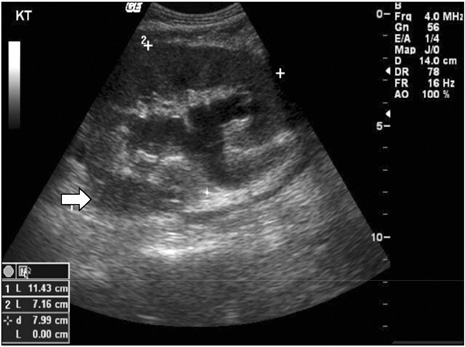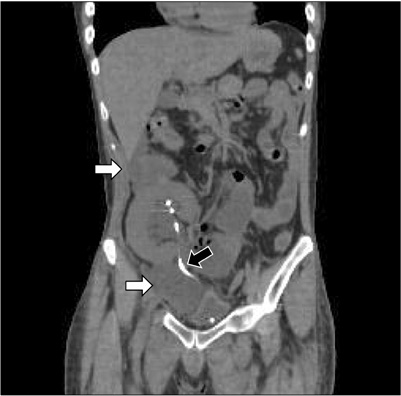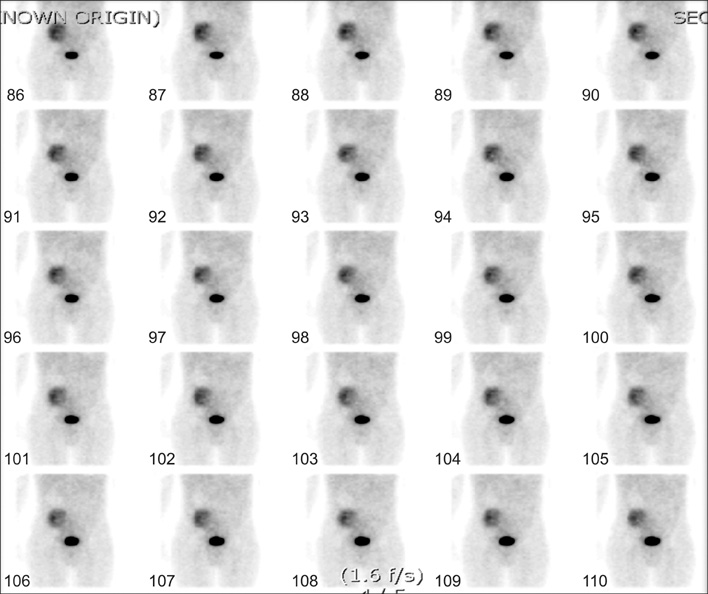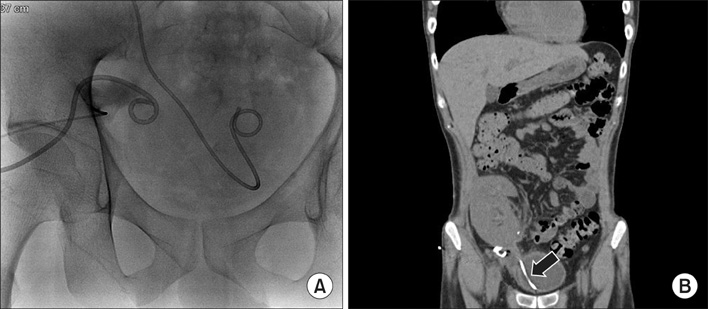Chonnam Med J.
2012 Apr;48(1):57-59. 10.4068/cmj.2012.48.1.57.
Perirenal Fluid Collection after Kidney Transplantation
- Affiliations
-
- 1Department of Internal Medicine, Chonnam National University Medical School, Gwangju, Korea. skimw@chonnam.ac.kr
- KMID: 2274883
- DOI: http://doi.org/10.4068/cmj.2012.48.1.57
Abstract
- A 30-year-old male presented with pitting edema. He had received a kidney transplantation 3 months previously. His serum creatinine level was increased, and a renal ultrasound showed hypoechoic fluid collection in the perirenal space and pelvic cavity. We conducted sono-guided percutaneous drainage of the fluid collected in the pelvic cavity. The chemistry of the peritoneal fluid was more equivalent to serum chemistry values than to urinary values. Simple aspiration and treatment with antibiotics were performed. We have presented a case of lymphocele after kidney transplantation. This case suggests that physicians should remember how to differentiate the pelvic cavity fluid collection in patients who have received a kidney transplant.
Keyword
MeSH Terms
Figure
Reference
-
1. Pollak R, Veremis SA, Maddux MS, Mozes MF. The natural history of and therapy for perirenal fluid collections following renal transplantation. J Urol. 1988. 140:716–720.
Article2. Lucewicz A, Wong G, Lam VW, Hawthorne WJ, Allen R, Craig JC, et al. Management of primary symptomatic lymphocele after kidney transplantation: a systematic review. Transplantation. 2011. 92:663–673.
Article3. Manahan KJ, Fanning J. Peritoneal fluid urea nitrogen and creatinine reference values. Obstet Gynecol. 1999. 93:780–782.
Article4. Zagdoun E, Ficheux M, Lobbedez T, Chatelet V, Thuillier-Lecouf A, Bensadoun H, et al. Complicated lymphoceles after kidney transplantation. Transplant Proc. 2010. 42:4322–4325.
Article5. Iwan-Zietek I, Zietek Z, Sulikowski T, Nowacki M, Zair L, Romanowski M, et al. Minimally invasive methods for the treatment of lymphocele after kidney transplantation. Transplant Proc. 2009. 41:3073–3076.
Article





